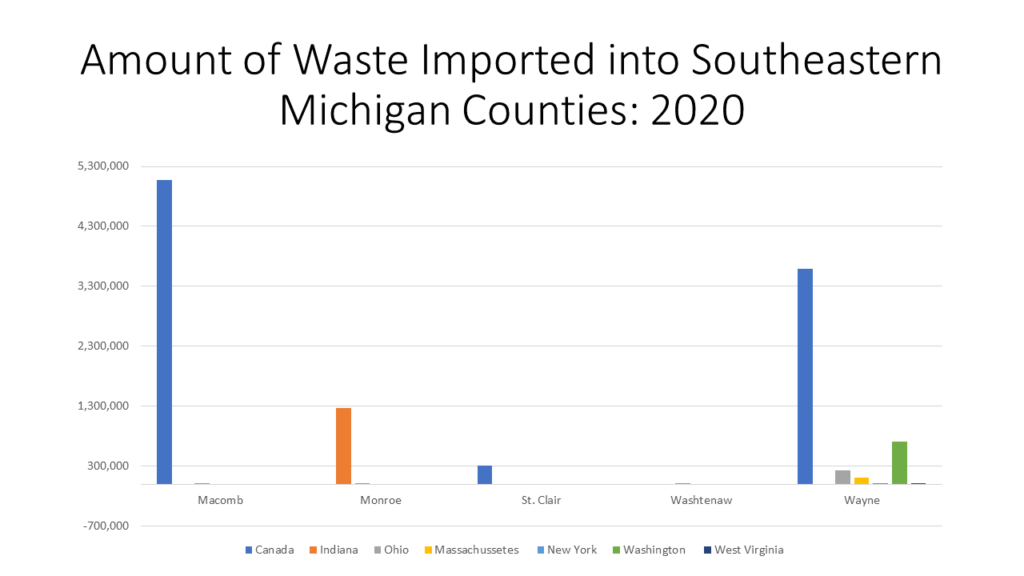In Michigan, the total amount of solid waste disposed in the state decreased between fiscal year 2019 and 2020, as did the total amount of solid waste imported into Michigan. However, while the total amount of waste disposed of in Michigan decreased, the amount of waste disposed of in Michigan from other states increased.
The total amount of solid waste disposed in Michigan in 2020 decreased by about 3 million cubic yards, or about 5.4 percent from the previous fiscal year (2019). The amount of solid waste generated in Michigan decreased from about 43.3 million cubic yards in fiscal year 2019 to about 40.4 million cubic yards, a decrease of about 6.8 percent. Overall, the total amount of imported waste into Michigan landfills decreased from 12,380,141 cubic yards in 2020 to 12,310,608 cubic yards in 2019, a decrease of about 0.6 percent. The largest source of waste imported to Michigan continues to be from Canada, with a total of about 9.1 million cubic yards, down 480,274 cubic yards reported for fiscal year. Overall, the amount of solid waste Canada imported to Michigan in 2020 was about 17.2 percent of all waste disposed in Michigan landfills, while Michigan created about 77 percent of the waste. Other states also contributed to the total amount of solid waste in Michigan, with waste from other states brought to Michigan making up 6 percent of Michigan’s total waste. As noted, while the total amount of waste disposed of in Michigan decreased, the amount imported from other states increased from 5 to 6 percent. So, while the total amount of waste disposed of in Michigan declined, due to a decline in the waste generated in Michigan and imported from Canada, the amount of waste being brought to Michigan from other states has increased.
The data discussed above is shown in the Chart 1 and Chart 2 below and has been provided from the Michigan Department of Environment, Great Lakes, and Energy.


As noted, Michigan creates, and disposes of most of the waste in Michigan. Below we see how much waste was disposed of in each county in Southeastern Michigan. The chart below does not reflect the amount of waste created in each county, but rather disposed of, meaning waste from other counties, Canada and other states are included in the numbers below.
Wayne County had the highest amount of waste disposal at more than 11.1 million cubic yards in 2020. This was more than twice the amount of any other county in the region. Macomb County had the second highest amount of waste disposed in 2020 at about 3.3 million cubic yards. Livingston County had the lowest amount of waste disposed at about 330,000 cubic yards.


Overall, it is encouraging to see the total amount of waste being disposed of in Michigan has decreased, but it remains a concern that the State continues to allow outside states and countries to import their waste. This is especially concerning as the amount of waste being imported to Michigan from other states has been increasing, despite the total amount of waste being disposed of in Michigan is decreasing.
One of the many ways to combat climate change is to decrease the amount of waste we, as a society, produce. Ways to achieve this include reusing items, recycling and being mindful in our purchases and consumption.